IPS vs VA Panel: Which One Should You Prefer When Buying a Monitor or TV?
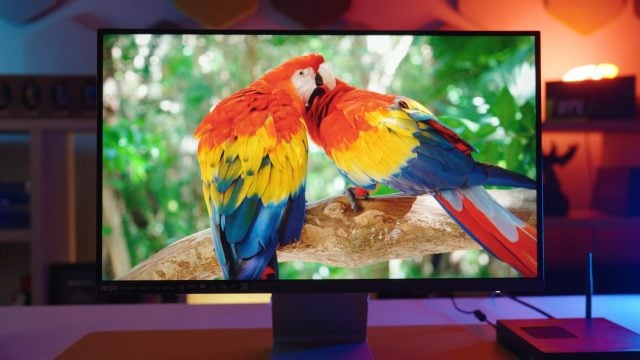
When purchasing a monitor or television, we get caught up in many technical details and spend a long time. We know that you carefully examine everything about the product you are going to buy, especially if you are one of the technology enthusiasts. As display technologies continue to develop, definitions such as OLED, QLED and QD-OLED have entered our lives. On the other hand, IPS and VA are the two most common LCD panel types that have been used in high-tech products for many years. While it continues to be widely used today, it continues to compete with modern OLED displays in terms of price/performance.
Mini-LED backlight technology is quite attractive, but still very expensive. LCD screens are still not obsolete and still offer many advantages. There are many technical details such as sizes, resolutions, refresh rates, response times, Sync technologies. Panel selection comes before anything else. Our job is to make your purchasing process easier. You are going to buy a TV or monitor, are you stuck between two panels? Both have advantages and disadvantages. Let’s first get to know IPS and VA panels, and then let’s look at the differences between them.
What is VA Panel?
VA means “vertical alignment”. As you can guess from the name, this display technology uses vertically aligned liquid crystals that bend when a voltage is applied to allow light to pass through. This is the main difference between IPS and VA display panels. In IPS panels, the crystals are parallel to the substrates, while in VA panels, the crystals are positioned perpendicular to the substrates. Meanwhile, there are also many versions of VA panels available, such as AMVA developed by AU Optronics and SVA developed by Samsung.

As we mentioned, VA stands for vertical alignment, where liquid crystals are aligned vertically to the substrate surface. As a result, these panels can offer wider viewing angles (but lower than IPS) compared to TN panels. Additionally, VA panels, which offer excellent contrast ratio, can provide very good details in game and movie scenes.
What is IPS Panel?
IPS is a term consisting of the initials of the words in-plane switching. IPS display technology, like all other display panel technologies, uses voltage to control the alignment of liquid crystals. However, unlike TN display panels, IPS panels use a different crystal orientation, where the crystals are parallel to the glass substrates. Instead of bending crystals to change the amount of light passed through, IPS crystals are actually rotated, which brings a number of benefits.
There are also various sub-variants of these technologies that can improve things even further. Depending on the panel manufacturer, you may see panel types named differently. While Samsung names its IPS display panels as PLS, some brands such as LG prefer to use the term IPS directly. When it comes to VA display panels, we see that Samsung uses the name SVA, while AU Optronics uses the name AMVA.
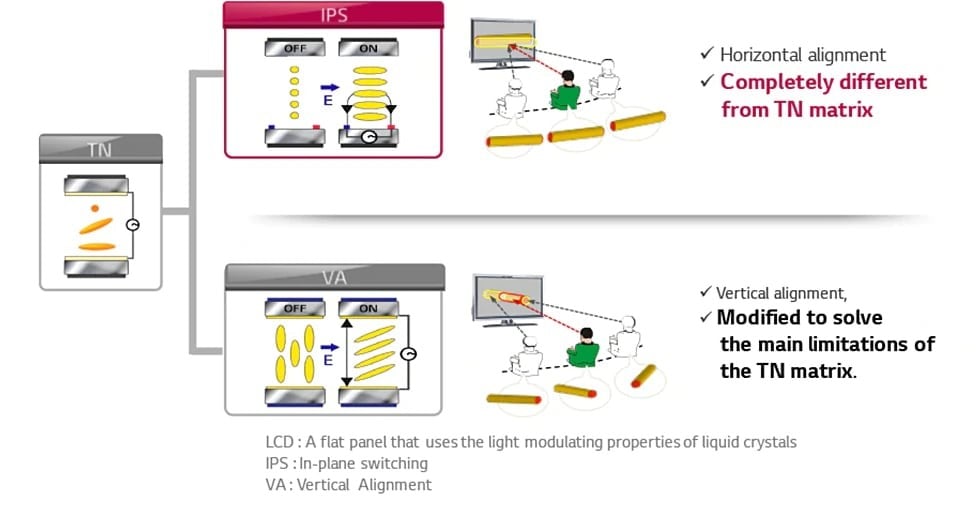
In summary, IPS is one of the LCD panel types in which liquid crystals are aligned in parallel. It is widely used in today’s computer monitors, televisions and mobile devices (smartphones and tablets). IPS panels stand out with their excellent viewing angles and color reproduction (compared to older TN panels). This makes it suitable for many usage scenarios, including gaming or office work.
So what are the things that make one better than the other?
Color Accuracy and Coverage
IPS panels have traditionally been used to produce displays with high color accuracy and covering wide color gamuts such as DCI-P3/Adobe sRGB. In addition to high color accuracy, IPS screens allow us to see the screen better when you look at it from different angles. Therefore, you do not need to look at the IPS monitor directly from the front or slightly from the edge to see the correct colors.
Color accuracy and coverage can be good on VA displays (even at wide angles), but colors on VA displays are not always the same. Depending on the viewing angle and the distance between the viewer and the screen, VA monitors often have more gamma at the center of the screen than at the edges of the screen. Ultimately, we see colors a little differently than they should be.
While IPS is generally better than VA when it comes to color accuracy and coverage, VA panels have adequate color accuracy and coverage for the vast majority of users. So we can say that the VA panel is sufficient for most users around the world. However, professional photo and video editors may be disappointed when choosing a VA monitor that covers only 90% of the DCI-P3 color space. IPS is definitely preferred for professional work, but VA may also be preferred for gamers and general users. Choosing depends on your needs and monitor model.
To sum up, IPS panels can generally offer a higher color gamut. In this way, while richer colors are produced, we encounter a more vivid image while playing games. Most IPS monitors can achieve a higher percentage of the DCI-P3 and sRGB color gamuts. Higher color gamut means more vivid representation of colors and higher color accuracy.
Contrast Ratio
Contrast ratio measures how dark the color black appears on a screen and is measured by the x:1 ratio. In summary, the higher the “X”, the better. We said that IPS is generally very successful in terms of color accuracy, but VA panels are more successful in creating black colors. Even the most advanced IPS monitors and TVs may display a more grayish color rather than true black. We see that most IPS monitors are rated with a contrast ratio of 1000:1. This value is not very bad, but there are better ones. Like on the VA side.
For example, on a display with a 1000:1 contrast ratio, a white image appears 1,000 times brighter than a black image on a given monitor. The higher the contrast ratio, the better, as you will find more detail in an image due to deeper blacks (instead of blacks that appear gray or washed out) and increased grayscale detail .
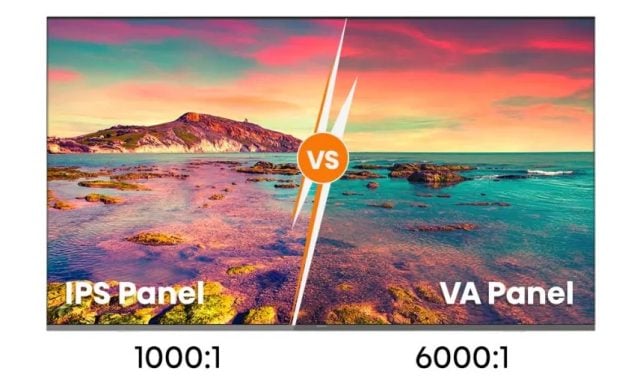
Even though VA panels are one step behind in terms of general color accuracy, they are very good in terms of contrast ratio. In other words, it can show black as truly black. Even the worst VA displays can easily achieve a contrast ratio of 2000:1, while some can reach values higher than 5000:1. In fact, VA comes second to OLED when it comes to contrast ratio. OLED is the undisputed leader in this business, as it can offer excellent contrast ratios such as ∞:1.
Although neither IPS nor VA panels can achieve the “infinite” contrast ratio of new OLED panels, the superiority of VA is indisputable.
Point of View
Most IPS panels have horizontal/vertical viewing angles of up to 178 degrees. Well what does it mean? If you are viewing on-screen content off-center, zoom in until you reach the extreme edges of the viewing angles. Too much color shifting or display decline in quality.
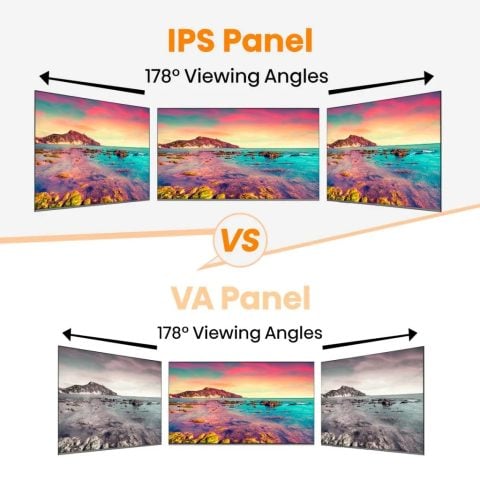
While VA panels have made great strides in viewing angles over the years, they are still not quite on the same level compared to IPS panels. VA panels are generally a bit poorer in terms of color/contrast shifts when displaying content off-center. However, if you are a gamer who constantly sits in front of the screen and plays games, this does not pose much of a problem for you.
Response Time
Pixel response time refers to how quickly a monitor can switch from one color to another (usually black to white or gray to grey), measured in milliseconds. Especially players pay great attention to these values. IPS and VA are at loggerheads when it comes to reaction times. While today’s advanced IPS displays have eliminated the traditional problems with response times, VA displays have not achieved the same amount of progress.
There is no standard that display manufacturers adhere to when it comes to measuring response time, but we can trust the words of one of the well-known manufacturers. According to BenQ, which produces both IPS and VA displays, IPS can have a response time of 1-2 ms, while VA can only reach 4-5 ms. The specific values here are not important because this is the most good case scenario. The main thing is that VA is much slower. We are making a generalization.
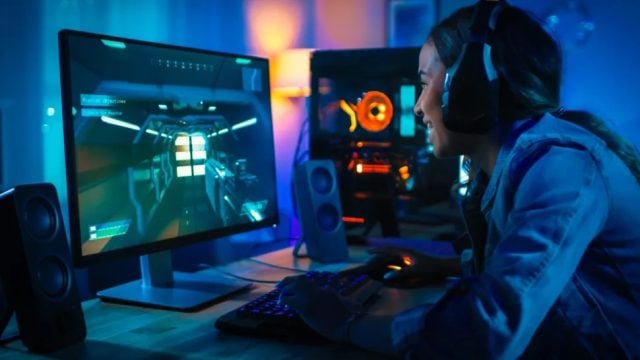
Response times that are too high can cause scenes with high movement to appear blurry and smeared. We call this problem ghosting. It is especially annoying for players who play fast-paced games like Counter-Strike and Valorant. Some solutions and workarounds are used to prevent ghosting on both IPS and VA screens. The most important of these is overdrive. When overdrive used too aggressively tries to change the color of a pixel on the screen too quickly, some visual artifacts may occur. In such a case, incorrect coloring may be visible for several frames.
Long story short, between the two, IPS panels tend to have lower response times. While the most advanced panels generally offer a response time of 1-3 ms, some go as low as 0.5 ms. VA panels are generally further back.
Refresh Rate
Refresh rate refers to how often per second your display can display an image and is measured in hertz (Hz). So if you have a monitor with a 240 Hz refresh rate, it will refresh the image 240 times per second. However, you don’t just depend on your monitor to achieve the high watermark of 240 Hz or 360 Hz.
Gamers now prefer monitors with a minimum of 120 Hz or even 165 Hz. The higher the Hz amount, the better performance you will see with a smoother image. Besides, no matter how good your monitor is, you need a powerful graphics card. A GPU that will deliver pixels fast enough to keep up with the monitor.
IPS panels began to offer refresh rates of up to 540 Hz on monitors with 1080p resolution. For a long time, 4K IPS panels were stuck at 144 Hz, but with developing technologies we started to see 4K panels that offer higher refresh rates.
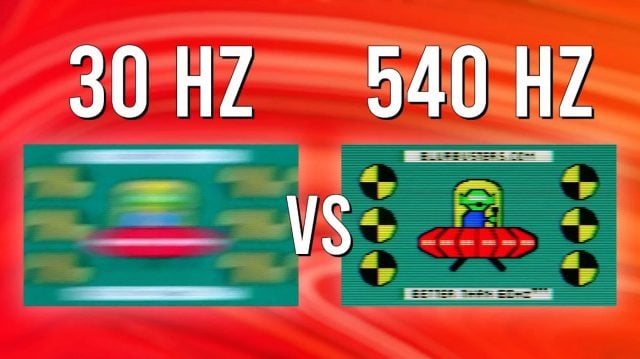
Advanced VA panels can generally offer refresh rates around 240 Hz. However, you will mostly see VA monitors that can reach speeds of 144 Hz and 165 Hz. If you want more, IPS is clearly ahead.
For example, even if a VA panel display offering a 360 Hz refresh rate is produced, it may not be preferred due to its poor response times. A 360 Hz display refreshes every 2.7 ms, which is below what VA can generally achieve.
IPS or VA?
Actually, the choice is yours, you can make a choice depending on your needs. When we look at it in general, we can say that IPS panels are a little more advantageous. However, there are hundreds of models on the market from different brands with different features. For this reason, it is better to look at product-based products and make a choice. Of course, price is also important. VA panels are heavily used in mid-range gaming monitors, gaming TVs, and ultrawide displays.
If you have to choose between VA and IPS, it all depends on your personal preferences and your usage area. While one user may play fast-paced e-sports games, another gamer may enjoy slow-paced story games. We also constantly conduct monitor reviews, which can help you make decisions. As a result, even monitors with IPS displays can have poor color accuracy and poor response time. Therefore, it is better to think product-wise. When we look at it in general, the following picture emerges:
| IPS | VA | |
|---|---|---|
| Refresh Rate | ✗ | |
| Reaction Time | ✗ | |
| Contrast Ratio | ✗ | |
| Viewpoints | ✗ | |
| Color Accuracy | ✗ | ✗ |
Monitor Panel Types: TN, VA, IPS
There are three main LCD technologies used in today’s PC monitors: twisted nematic (TN), vertical alignment (VA), and in-plane switching (IPS). Now, high-cost OLED gaming monitors have started to become widespread. As you can imagine, these models are very expensive.
All panels have different advantages and disadvantages. Also, they all differ in the way they use liquid crystals. In fact, it is even possible to write a separate article for each, but here we will look at the most important details and the differences you can expect in practice.
TN Panel
TN (twisted nematic) displays are known for their high refresh rates and low prices. This is where liquid crystals are bent 90 degrees to allow light to pass through.
Pros
- TN displays are generally cheaper than IPS and VA displays.
- It is easier to achieve high refresh rates and low response times with TN displays. However, it is possible to achieve similar levels of latency and refresh rates on more expensive IPS and VA panel displays. ASUS ROG Swift 500 Hz gaming monitor, which was announced in 2022 and is expected to be the fastest monitor, is % compared to normal TN in terms of refresh rate. 60 will use an “E-TN†panel that can offer better response times. Although it is possible to see monitors that offer refresh rates up to 360 Hz on IPS or VA panels, the limits are still exceeded by the TN panel.
Cons
- TN has worse color reproduction compared to IPS and VA technology. Simply put, the image appears to be of poorer quality and the colors appear duller.
- TN also has worse viewing angles than IPS and VA. This means that it is more difficult to see the image when looking at the screen from an angle or from above.
IPS Panel
IPS (In-plane switching) displays are known for their strong viewing angles and vibrant colors. These panels use liquid crystals parallel to the glass layers. The crystals rotate in parallel to allow light to pass through.
Pros
- IPS panels have wider viewing angles than VA and TN screens.
- IPS offers richer, wider color gamuts than its competitors, especially TN.
- IPS displays have become increasingly popular, especially in the last few years.
Cons
- IPS monitors with low response times and high refresh rates are much more expensive than TN panel monitors with similar features.
- IPS monitors are generally more expensive than VA displays.
VA Panel
Vertical alignment displays are known for their strong contrast. Liquid crystals are perpendicular to glass surfaces and allow light to pass through as the crystals bend.
Pros
- VA panels excel in contrast, which is generally considered the most important factor in image quality. Such monitors usually have a contrast of 3,000:1, while a typical IPS monitor comes with a ratio of 1,000:1. On the other hand, more advanced products of the IPS Black type are starting to appear on the market. In this panel type, contrast doubles to 2,000:1.
- VA monitors Generally (not always) cheaper than similar IPS options.
Cons
- Displays with VA panels are generally more expensive than TN monitors.
- While there are many VA monitors on the market, IPS is starting to become a little more common.
OLED
Pros
- OLED displays work on a pixel-by-pixel basis to create perfect black zones, allowing for theoretically unlimited contrast levels.
- OLED panels typically offer wide color gamut. When combined with the high control rate, we get a very rich and saturated image.
- The blooming problem is not common on this type of screens.
Cons
- OLED displays are much more expensive than LED displays.
- OLED panels are typically dimmer than LED panels. Depending on the model, we can see maximum brightness levels of 600 nits. High-end models like Samsung Odyssey Neo G8 Mini LEDÂ monitors can reach 2,000 nits. LG Display says that its newly released OLED EX TVs provide images that are up to 30% brighter than typical OLED displays.
- Burning-in of static images is still a risk with OLED.
TN vs IPS vs VA
| TN | VA | IPS | |
| Performance | Quick: Low response times, high refresh rates, minimal motion blur, low input lag | Generally the longest response times, but there are many monitors with high refresh rates | Slower response times than TN, faster than VA |
| Screen | Poor color quality And bad viewing angles | The viewing angle is generally better than TN, worse than IPS. Best contrast, best image depth |
Best viewing angles, best color |
| Pricing | Cheapest choice | Compared to expensive TN models, it may offer similar prices, but is generally more expensive | The most expensive choice |
| Best Use Area | Acting | General Use | Professional |

